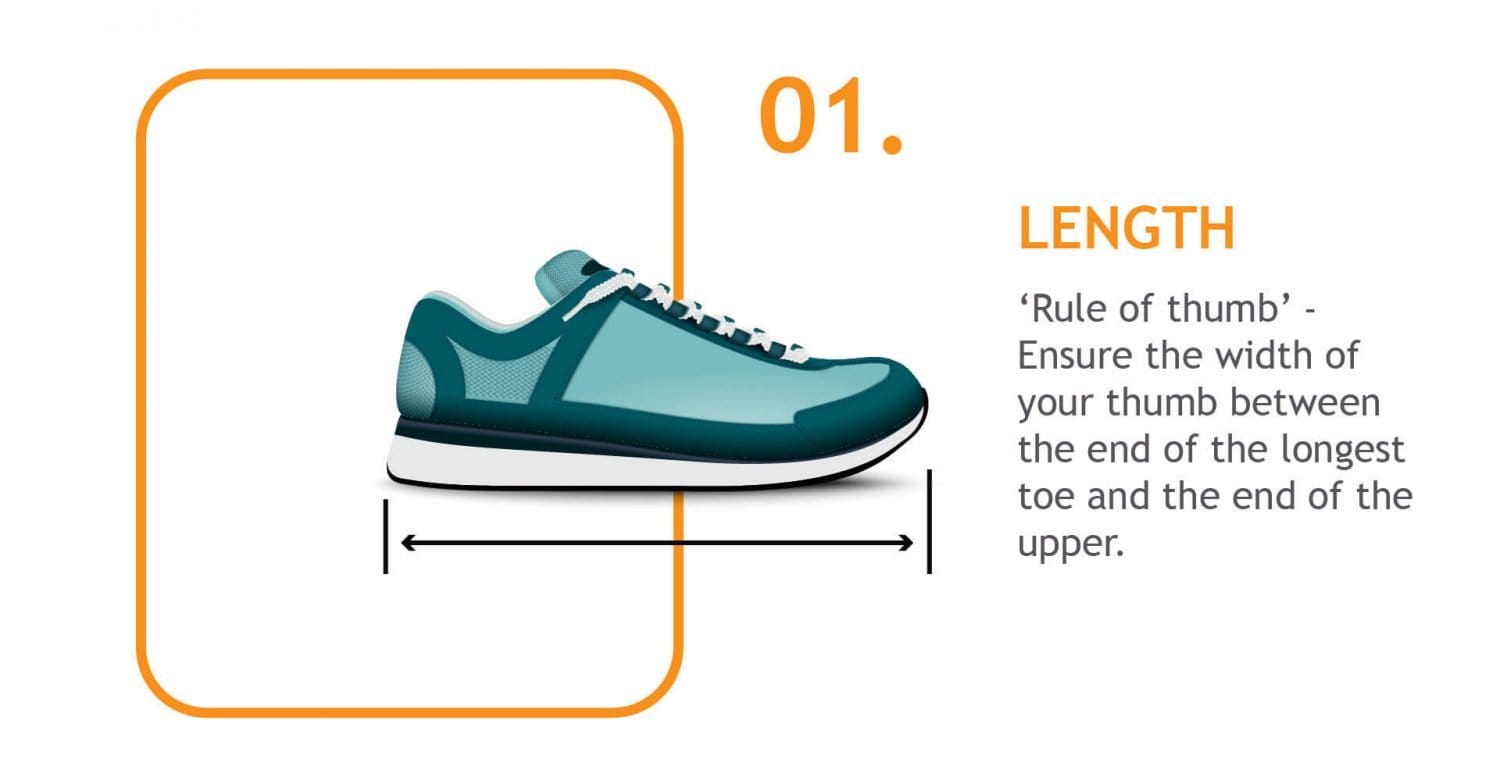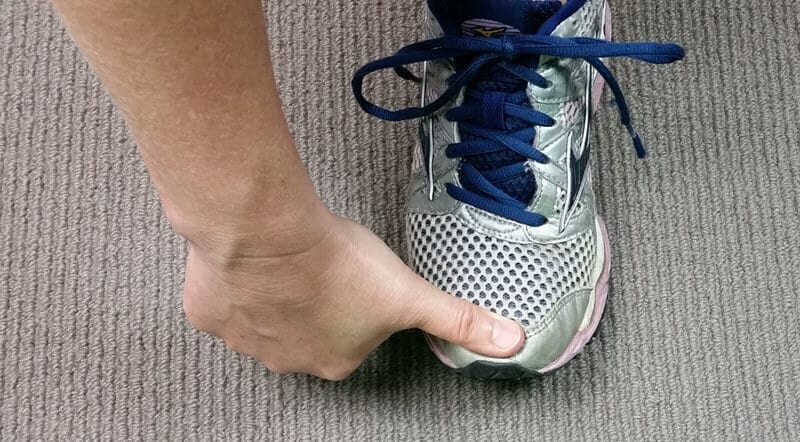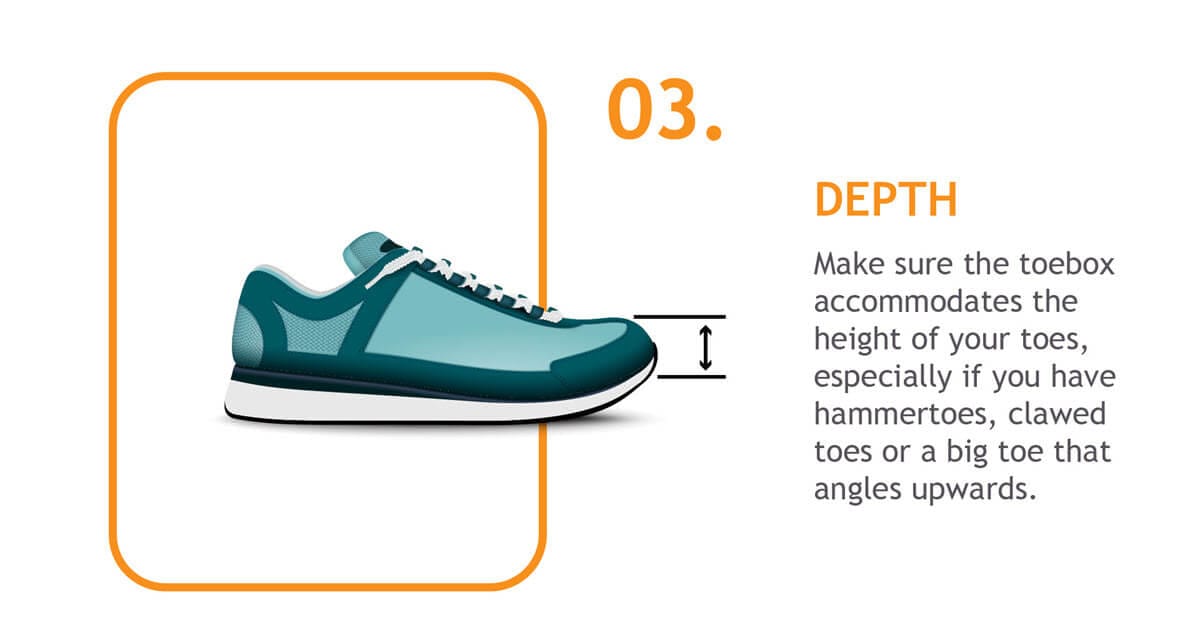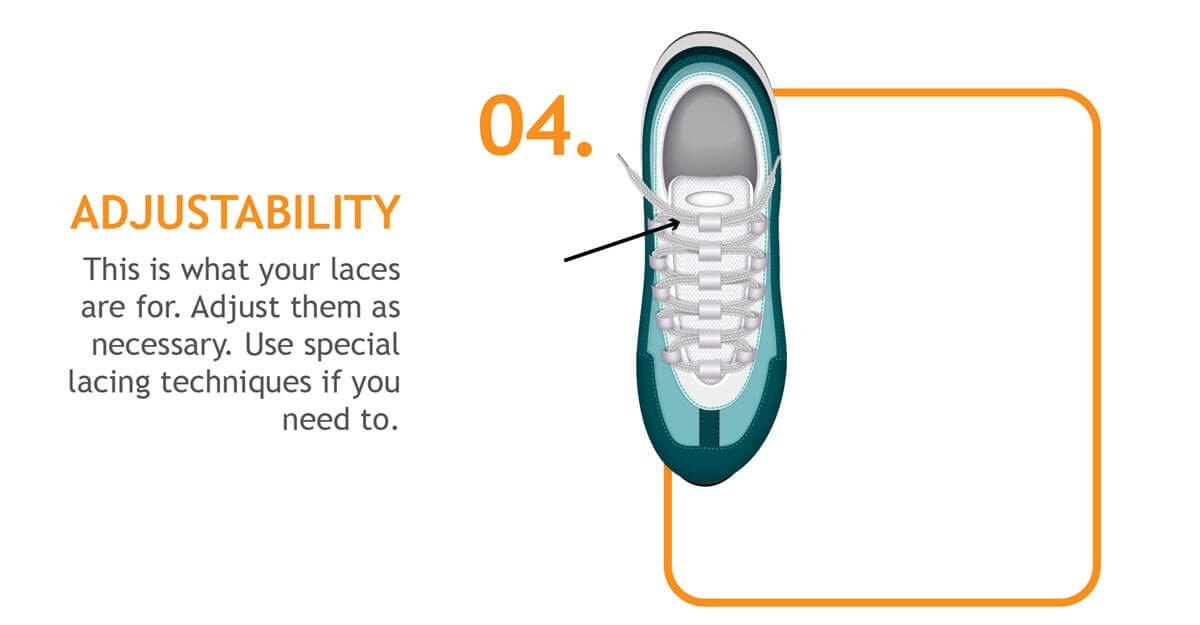Having a well-fitting shoe is your first and most important blister prevention consideration. Too small and the contact pressure from the shoe upper makes it easier to get blisters. They'll happen sooner and they'll be bigger. Too big and your foot floats around with episodes of high contact pressure as toes jam into the end of your shoe. Blisters, bruises and black toenails will be the result. All this can be avoided (or at least minimised) with an optimal shoe fit.
Do You Know How To Fit Shoes Properly?
Optimal shoe fit for blister prevention revolves around:
- Length
- Width
- Depth
- Adjustability
01. Length
The 'rule of thumb' is to have the width of your thumb between the end of the longest toe (usually the 2nd toe - but not always) and the end of the shoe upper. Measure this while you're standing (because your foot will elongate a bit) and make sure your heel is right at the back of the shoe.

If you're struggling with recurring blisters in your activity, such as during an ultramarathon, check the rule of thumb now; check it several times during the race; and check it at the end. If at any stage you don't have a thumb-width, your shoes are too small. You'll need to take another pair of shoes to change into. Because you're running in shoes that are too small for you - at that time.
If you wear boots and you cant feel the ends of your toes through your boot upper, take the insole out and stand on it. Have you got a thumb-width?

02. Width
If you see your forefoot bulging over the sole of the shoe, it's probably too tight. On the other hand, you don't want too much width. If you tie your laces and the facings (the material the laces go through) are touching one another, you've got nowhere to go if your shoe stretches. It's going to get too loose. Again, check this while you're standing. You can also take the insole out of your shoe, stand on it and see if your foot hangs over it.

03. Depth
Depth is often overlooked. Laces provide the ultimate ability to modify the shoe's depth at the midfoot, and a little less so at the forefoot. But toebox depth is not adjustable. Some materials provide for a toebox which is flexible, which can help a lot - like the mesh uppers of running shoes. But some materials are mush less flexible, like leather. And the steel toe cap of work boots afford no flexibility at all.

04. Adjustability
Proper shoe fitting isn't just about the length and width. You could have a perfectly sized shoe but if your laces are too tight or too loose, you've wasted your time. You might as well not have bothered getting the perfect sized shoes!

The whole reason we have laces is to optimise shoe fitting at all times. Only when the foot fits snuggly in the shoe does the shoe provide the support it's able to and help prevent injury, like blisters.
If your shoes are too loose:
- First make sure you've used the last pair of eyelets - the holes your laces go through
- Next try the lace-lock lacing technique (video below) - it's a winner
- If that doesn't work, check Ian's Shoelace Site for a lacing technique that suits you
At the other extreme, to avoid your shoes getting too tight, be prepared to adjust your laces as you go. Foot volume will increase with temperature and longer duration activity, even in the leanest and fittest people!
The Importance of Optimal Shoe Fit For Blister Prevention
Perfectly fitting shoes won't always stop foot blisters. Richie (2010) cites three studies that have not confirmed optimal shoe fit as an effective blister prevention strategy and suggests factors other than shoe fit must be implicated.
However, neglecting good shoe fit makes it harder for other blister prevention interventions to be effective. My advice is to get professional help from a specialist footwear retailer to get the right shoe for the job and for your foot. And use your laces to maintain optimal fit.
If you're still having trouble with shoe-fit, I want you to read this: "Shoe-fit is important, but it's not everything".
Conclusion
Optimal shoe fit for blister prevention revolves around:
- Length
- Width
- Depth
- Adjustability
Friction Management Without Taking Up Any Room In Your Shoe
ENGO Blister Patches are my go-to friction management strategy. One of the reasons is they don't alter the way your shoes fit.








